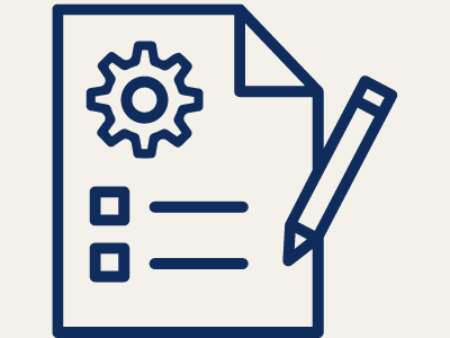
Creating a testing plan can be essential for any software development project, as it provides an organized framework and structure that helps ensure success. Developing an effective test plan is a critical skill, and having one in place will help guide you through every step of the process, from gathering the necessary information and data to deciding on tools and personnel requirements.
=>Do you know the difference between a test plan and a test strategy? Find out more in this article.
This guide will provide a step-by-step breakdown of what you need to know when creating the perfect testing plan. We'll cover everything from deciding on a format and structure, gathering all the relevant data and information, breaking down each section of the test plan, and providing tips to ensure that your test plan is effective. By the end of this guide, you'll have all the information and tools necessary to create the perfect testing plan. So let's get started!
Creating the basic template for your test plan is an important first step. It will give you a framework to work with and provide guidance throughout the rest of the process. When creating this template, there are several things to consider.
Once you’ve created your template, it’s time to move on to the next step: breaking down each section of the test plan.

Now that you’ve created the basic template for your test plan, it’s time to dive into the details and break down each section of the plan. Writing a thorough and comprehensive test plan can seem like an overwhelming task, but by following these guidelines, you will be well on your way to creating the perfect test plan.
The first section of the test plan should be an introduction and overview. This is where you’ll provide a general overview of the project, including key stakeholders, timelines, milestones, and goals. You can also include any special considerations or challenges that may affect the project.
Example
This project aims to create a new software product for ABC Corporation. The timeline for this project is six months, with key milestones and deadlines at the one-month, three-month, and six-month mark. We have 10 stakeholders involved in this project from various departments within the company.
The second section should outline your goals and objectives. This will include any specific goals that need to be achieved, as well as any objectives that must be met in order for the project to be successful.
Example
The goal of this project is to create a software product that meets the customer’s needs and exceeds their expectations. The objectives for this project are to complete development within the six-month timeline, ensure that all stakeholders are adequately informed throughout the process, and create a product with an intuitive user interface.
The third section should focus on the scope and limitations of the test plan. Here, you’ll explain what is within the scope of the plan and anything that falls outside of it.
Example
This test plan covers the development of a software product for ABC Corporation from conception to launch. It does not include any post-launch maintenance or testing, as these tasks will be handled in separate plans. Additionally, this plan is limited to functional testing only; security and performance testing will be covered in separate plans.
The fourth section should cover the test environment requirements, including any hardware or software that needs to be set up for testing.
Example
This software product will require the following hardware and software for testing purposes: ABC Corporation’s development servers, a web browser, and an operating system that supports the software. Additionally, all personnel involved in testing should have access to the relevant documentation and resources needed to complete their tasks.

The fifth section should provide details on the testing methodology you plan to use, including any specific techniques and tools that will be used during testing.
Example
For this software product, we will use a combination of black-box and white-box testing techniques. We will also be using automated testing tools, such as Selenium and JUnit, to ensure that our tests are accurate and efficient.
The sixth section should include scheduling and milestones, along with any deliverables and deadlines associated with the project.
Example
The development process for this software product will span six months, with milestones at the one-month, three-month, and six-month mark. The first milestone is to complete initial development by the end of Month 1; the second milestone is to complete functional testing by the end of Month 3; the third milestone is to complete user acceptance testing by the end of Month 6. Additionally, we will be delivering a final product to ABC Corporation at the end of Month 6.
The seventh section should list all the resources and personnel requirements needed to carry out the test plan.
Example
For this project, we will need two software developers, one tester, and a project manager. We will also need access to ABC Corporation’s development servers and the necessary software tools. Additionally, we will need to allocate a budget for any additional resources that may be required during development.
The eighth section should include a risk assessment and mitigation plan, which will provide details on how to address any potential risks or issues that may arise during testing.
Example
We will identify any potential risks or issues that may arise during the development process, such as delays in development or bugs in the software. We will then create an action plan to address these risks and ensure that they do not impede the progress of the project. Additionally, we will conduct regular reviews to monitor progress and identify any new risks.
The ninth section should cover documentation and record keeping, including what documents will need to be created and how they should be stored.
Example
We will document all test results, including bugs found and any fixes implemented. We will also keep a record of all meetings and discussions related to the project, as well as any changes in scope or requirements. All documents should be stored securely in an organized fashion so that they can be easily accessed in the future.
We will provide weekly progress reports to stakeholders detailing the status of the project. Additionally, we will need to obtain approval from ABC Corporation prior to launching any new features or making significant changes to the software product. All approvals should be documented and stored in accordance with our record-keeping policy.
By following this test plan template, you can ensure that all of the critical components of a test plan are included in your document. If any additional information is needed, make sure to update the plan accordingly. This will help set expectations for all stakeholders involved in the project and ensure that everyone is on the same page throughout development. With a well-written test plan, you can be sure that the project will be a success.

Check your test plan using these final tips to determine if you have created an accurate, comprehensive, and easy-to-follow document.
1. Make sure all stakeholders agree on the scope of the plan before beginning development. This will ensure that everyone involved is aware of what needs to be accomplished and their individual roles and responsibilities.
2. Include a timeline with deliverables and deadlines to ensure that all tasks are completed on time. This will help keep the project on track and avoid any delays.
3. Document all test results, including bugs found and fixes implemented, along with their associated timelines. This will provide valuable insight into the progress of the project and help identify any potential problems.
4. Follow a consistent format when writing the plan. This will make it easier to read and understand, while also helping to ensure that all important information is included.
5. Create an action plan for addressing potential risks or issues that may arise during development. This will help reduce any potential delays or costly mistakes.
These tips will help you create a thorough test plan for your software project, which will increase its chances of success.
Creating a test plan is an essential part of any software development project. By following this test plan template, you can ensure that all of the critical components are included in your document and that all stakeholders have a clear understanding of what needs to be accomplished. With a well-written test plan, you can be sure that the project will run smoothly and be a success. So, take the time to properly create your test plan and you’ll be on your way to an effective software development project.
Relevant Resources:
David Willcox graduated with a Bachelor of Science from Tulsa University having double majored in Chemical Engineering and Mathematics. He earned his doctorate in Chemical Engineering from Northwestern University. He has a broad background in education, industry and software testing. David has written software for 40 years, starting with BASIC, which was originally stored on yellow punch tape. Since that time, David has expanded his skills and is proficient in Assembly Language, Pascal, C, Objective-C, Visual Basic, C#, LabVIEW.NET, Python, R, HTML and JAVA.